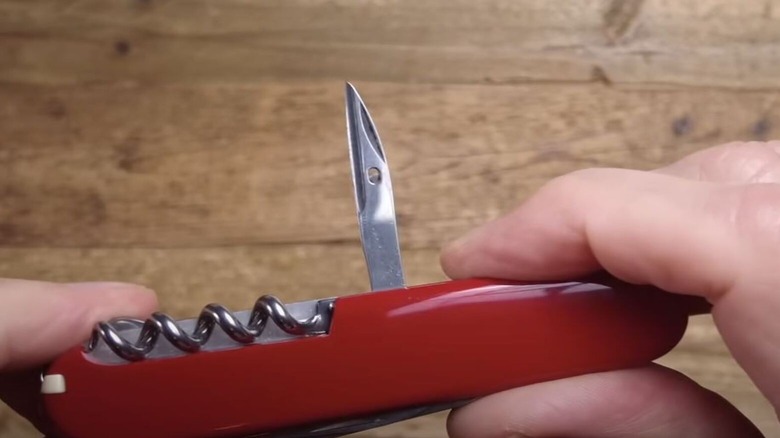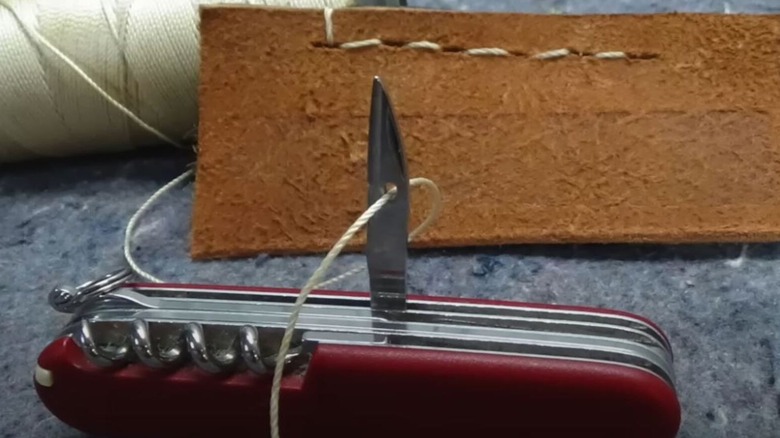How To Sew With A Swiss Army Knife (And Why You Might Need To)
Producing 10 million units a year, the Swiss Army Knife from Victorinox continues to be one of the most popular multi-tools worldwide. Victorinox Swiss Army knives are well-liked because of their exceptional value, durability, and adaptability. These knives are useful for everyday carry, home, office, and travel because of the variety of tools packed in a small and easy-to-carry package, including models that can even be used as a keychain. With over 400 variations, the Swiss Army Knife can have between one and 73 functions, which can be used for a variety of tasks, including several novel and alternative uses. However, one of the most surprising ways to use a SAK is for sewing using the awl tool.
One of the standard and often overlooked tools on the Swiss Army Knife is its awl or reamer, located on the backside, which is the side opposite of the main blade and other bigger tools. The awl is normally used to punch or enlarge holes in materials like leather, canvas, wood, and even plastic. In addition, the awl can be used as a screw or nail guide and for sewing during emergency or unforseen scenarios.
To sew using a Swiss Army Knife, it must have an awl with a sewing eye, as some SAK models, like those from pre-1985, did not have the feature, or certain models like the Alox series have awls that are installed on the main tool layer and also do not have sewing eyes. Next, to create the stitching, one will need sewing material like string, thick thread, or cord with enough length for the task.
One tool many uses, including sewing
To begin sewing with the SAK, prepare the string or sewing material to be used by cutting it based on the needed length. Next, using a lighter, sear both ends of the string to prevent it from unravelling. Once prepping the string is complete, hold the SAK and open the awl with its front side, meaning the side with the sharp edge facing front. Take the string and thread it through the back of the awl's sewing eye, and pull at least 5 inches of the thread to have enough working end length of string when sewing.
Hold the working end of the string and start to punch through the material to be sewn, with the sharp edge of the awl facing the direction of the stitch, and get enough of the working end of the string through the material. After the working end has been threaded, pull back the awl and punch another hole, about three centimeters beside the first hole, and again, pull back the awl, just enough to create a small loop. Take the working end of the string from earlier, and thread it through the looped string, fully remove the awl, and gently tug on both ends of the string to tighten the stitch. To complete the process, just repeat the previous steps until the full length of what needs to be sewn is stitched.
To be able to sew using a Swiss Army Knife is important, as it can do a quick fix or repair when needed. When outdoors and a needle or thread is unavailable, the awl can patch or stitch camping gear or bags. The SAK awl is one of its best tools, and aside from sewing, the awl has even more unexpected and unconventional uses.

